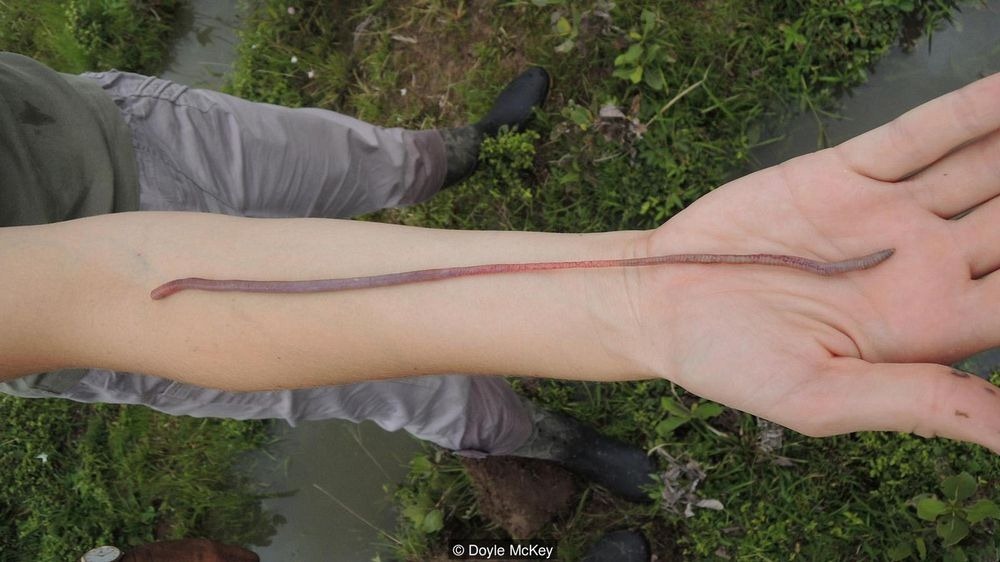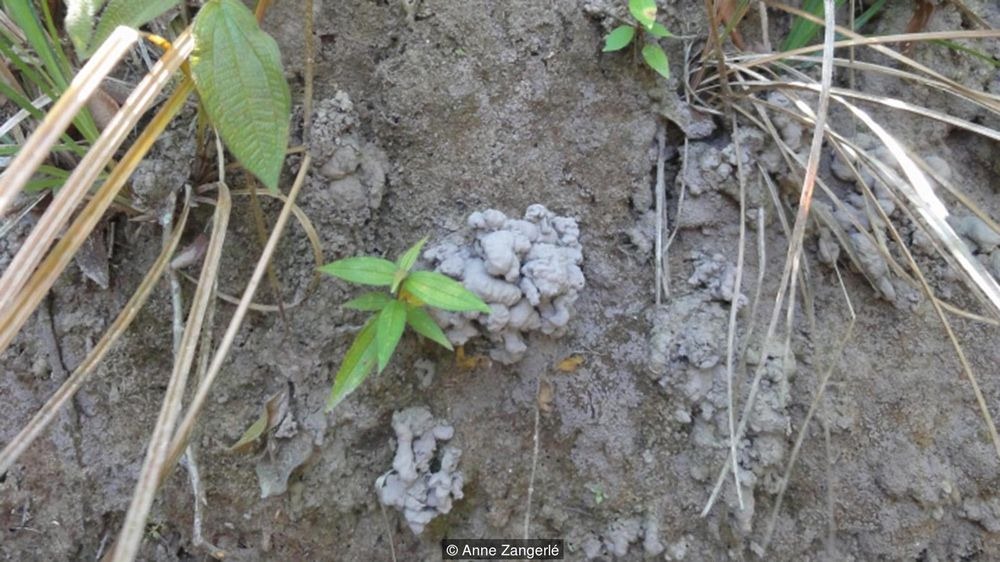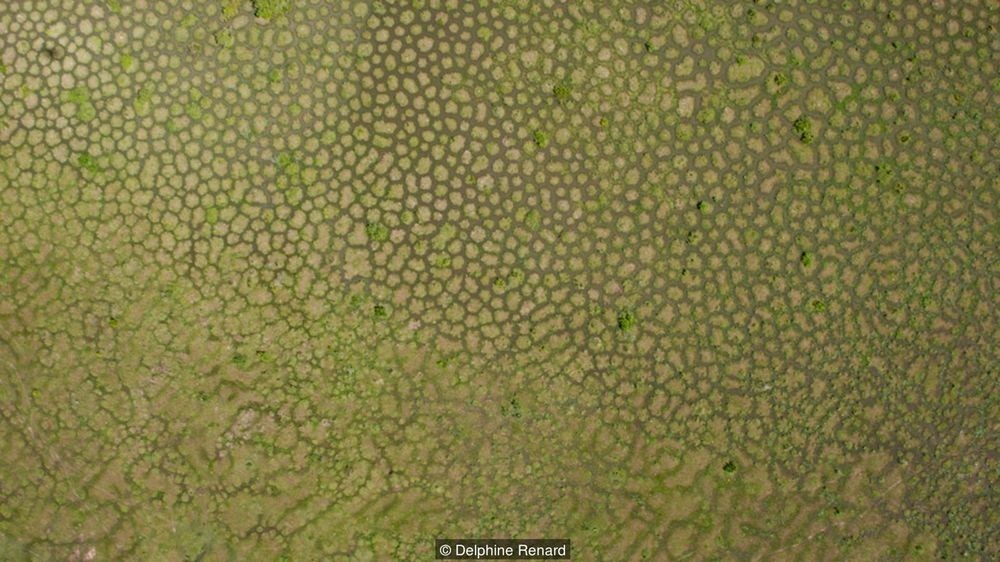Scattered across the vast grassy floodplains of the great Orinoco River of South America, in an area roughly the size of Ireland, are thousands of strange earthen mounds known among locals as “surales”. Regularly spaced and densely packed, these mounds can reach up to 6 feet tall and 16 feet wide. The mounds were first described in the 1940s, but no scientific studies were ever conducted because they were thought to be man-made.
Now researchers have found that surales’ true architects are gigantic earthworms that reach 3 feet in length. These earthworms, belonging to the genus Andiorrhinus, are the largest earthworms found in the area. They feed on organic materials found in the soil and poop a convoluted mass of soil, mud, and sand known as “casts” that pile up to form these mounds.

An aerial view of the tropical wetlands showing hundreds of mounds. Photo credit: José Iriarte
An average cast of a typical earthworm is rarely bigger than 1.5 cm in diameter. But the casts ejected by the Andiorrhinus earthworm has a mean diameter of over 5 cm, which is unusually large for an earthworm cast.
Living in the waterlogged pits between mounds, the Andiorrhinus worms have developed some unique eating habits. They live and eat in flooded pits, and always poop in the exact same place causing the mounds to keep growing while the pits keep getting deeper. Many generations of earthworms can feed and poop on a single mound.
The earthworms forage for food within a very limited radius distance from the mounds. This distance affects the size of the mound and the size of the pits.
Researchers believe that the mounds are not an unexpected side effect of eating and pooping within a confined space, but the worms build them deliberately for their own survival. The Orinoco basin floods every year, and the mounds of poop provide the worms a place where they can perch out of the water and breathe. The mounds are also used by other creatures to escape the flooded soil. Other earthworm species too help build up the mounds, and plant roots consolidate and maintain them.
The mounds also play an important role in ecology by altering soil moisture, which can affect the types of plants that can grow. Although the mounds and inter-mound regions are located right next to each other, they provide different habitats for the region’s plants.
The research was carried out by Anne Zangerlé of the Braunschweig University of Technology in Germany and Delphine Renard of McGill University in Montreal, Canada. Their findings were published in the journal PLOS ONE.

From the ground, surales look like large, vegetated mounds separated by swampy ditches. Photo credit: Jose Iriarte

An Andiorrhinus earthworm. Photo credit: Doyle McKey)

A typical Andiorrhinus cast. Photo credit: Anne Zangerlé

A drone image of the Surales. Photo credit: Delphine Renard
via BBC and National Geographic



Comments
Post a Comment